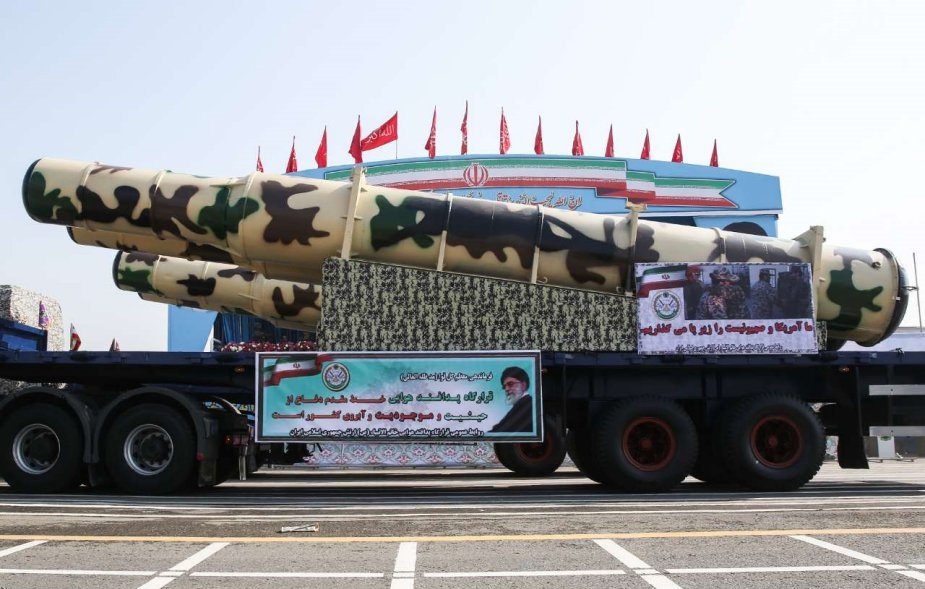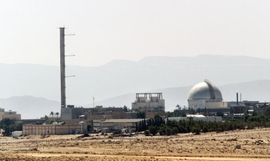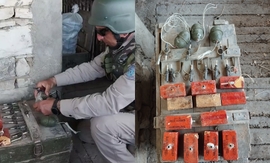An Iranian senior military official said Tehran has no plans to extend the range of its missiles, considering that Iran’s arsenal already can reach up to 2,000 km (1,240 mi) and is adequate enough to protect the country.
"We enjoy the capability to increase the range of missiles to over 2,000 km, and everybody knows that, but this is not our policy for now, because many of targets and strategic objects of our enemies are within this range," Commander of the Islamic Revolution Guard Corps (IRGC) Major General Mohammad Ali Jafari said, addressing a ceremony in Tehran on June 19, according to Iranian Student’s News Agency.
Jafari underlined that Iran's missile capabilities prevent the U.S. from launching war against the country.
A 2,000 km range encompasses much of the Middle East, including Israel and American military bases in the region. That is a concern for the U.S. and its allies, but Iran’s ballistic missile program was not included in the 2015 nuclear deal, formally called the Joint Comprehensive Plan of Action (JCPOA). UN Security Council Resolution 2231, which endorsed the deal, called on Iran to refrain from ballistic missile testing only on systems “designed to be capable” of delivering nuclear weapons.
General Jafari referred to Trump’s announcement in early May whereby he said the U.S. will be withdrawing from the JCPOA, saying that it had not, in fact, curbed Iran's ballistic missile program.
On June 18, 2017, under the Laylat al-Qadr operation, the IRGC fired six surface-to-surface mid-range ballistic missile from domestic bases targeting militants from Islamic State (IS) in the Syrian Deir ez-Zor Governorate, in response to terrorist attacks that struck Iran’s parliament in Tehran.
One day later the IRGC published aerial videos confirming that the missiles had successfully hit the targets with accuracy. The incident marked the first operational use of Iran's ballistic missiles since the Iran–Iraq War of the 1980-1988.
Iran's military attaché in Damascus, Abolqassem Alinejad, said during the anniversary of the IRGC's attack against IS in Deir ez-Zor that the missiles used in the operation were of medium-range, adding that the IRGC possesses many long-range missiles.
In 2017, Iran’s Supreme Leader Ayatollah Ali Khamenei, stated that Iran would not develop ballistic missiles with a range that exceeds 2,000 km.
The U.S. Defense Intelligence Ballistic Missile Analysis Committee wrote in a June 2017 report that Iran’s ballistic missile inventory includes systems with a range of up to 2,000 km, without citing capabilities beyond that range. The report mentioned that Iran’s space launch vehicles could provide a pathway to longer-range ballistic missiles, but many experts note that there are significant technological differences between space launch vehicles and ballistic missiles.
A recent report by The New York Times mentioned that weapons researchers have identified activity at a remote secret facility in the Iranian desert that points to the covert development of long-range missiles. Satellite images appeared to show, among other things, activity around a tunnel leading underground and evidence of powerful rocket engine tests that scorched telltale marks in the desert sand near the city of Shahrud.
Iran is accused of transferring ballistic missiles to Houthi rebels in Yemen that may have been used for launches aimed at Saudi Arabia, which took place in July and November of 2017 and March 2018. U.S. President Donald Trump has been trying to include shorter-range missiles capable of striking Israel into any new deal brokered with Iran.







 President Aliyev emphasized the critical role of the North-South Transport Corridor in fostering transport cooperation between Azerbaijan and Russi...
President Aliyev emphasized the critical role of the North-South Transport Corridor in fostering transport cooperation between Azerbaijan and Russi...
 Armenian sappers commenced on Monday mine-clearance operations in the territories adjacent to the Saint Mary Church in village of Voskepar (Armenia...
Armenian sappers commenced on Monday mine-clearance operations in the territories adjacent to the Saint Mary Church in village of Voskepar (Armenia...
 The Mine Action Agency of Azerbaijan (ANAMA) reported on Thursday the discovery of a significant amount of explosives in the Khojavand district of ...
The Mine Action Agency of Azerbaijan (ANAMA) reported on Thursday the discovery of a significant amount of explosives in the Khojavand district of ...
 Russian Foreign Minister Sergei Lavrov has reasserted that Moscow has no intentions to stop the fighting in Ukraine, even if peace talks commence.
Russian Foreign Minister Sergei Lavrov has reasserted that Moscow has no intentions to stop the fighting in Ukraine, even if peace talks commence.



